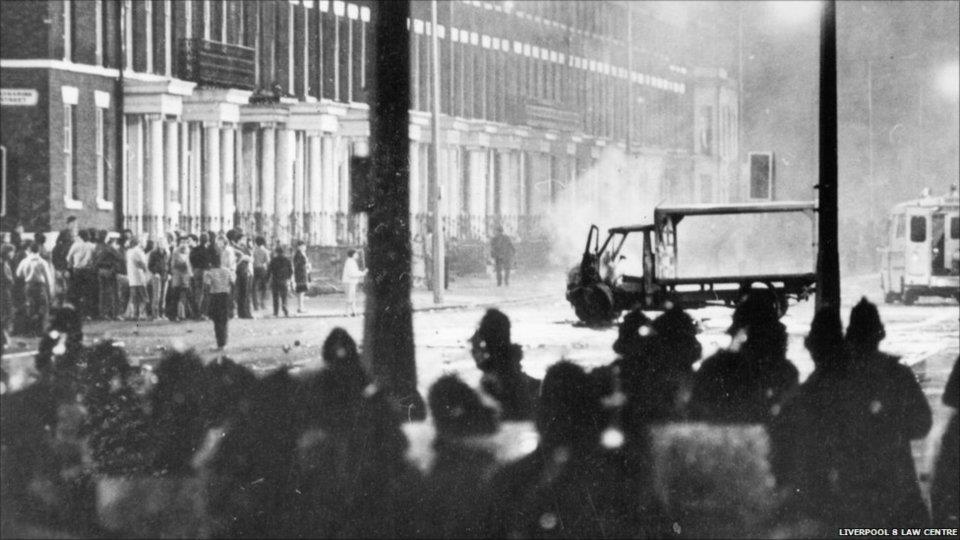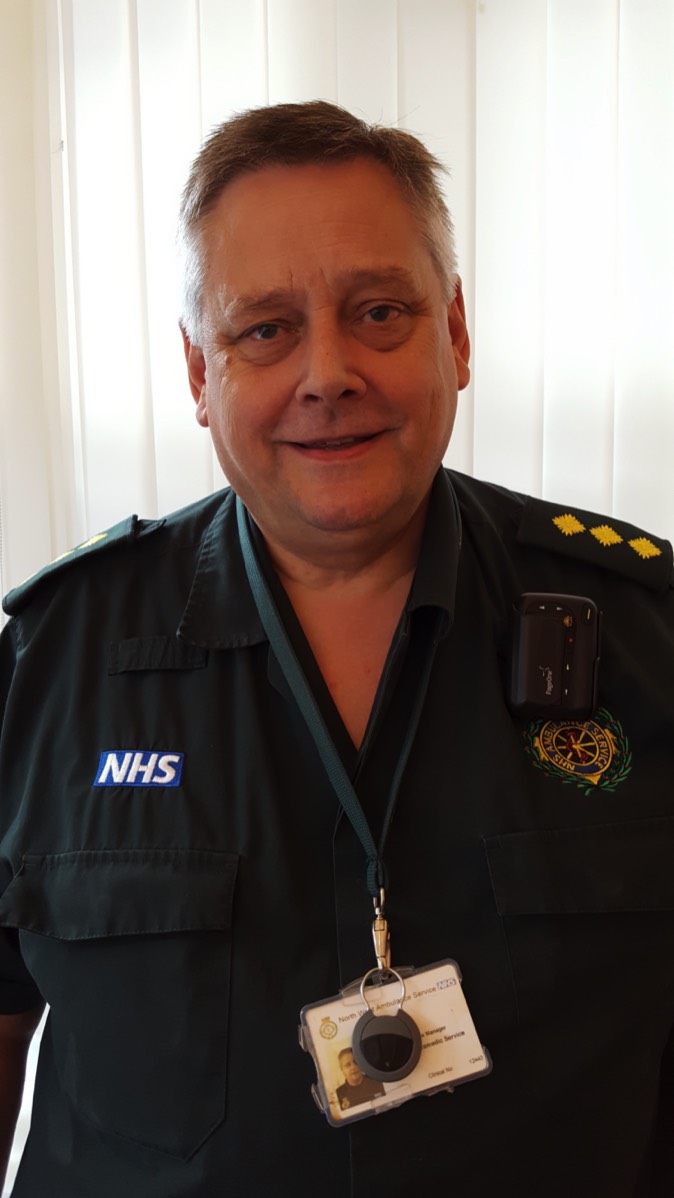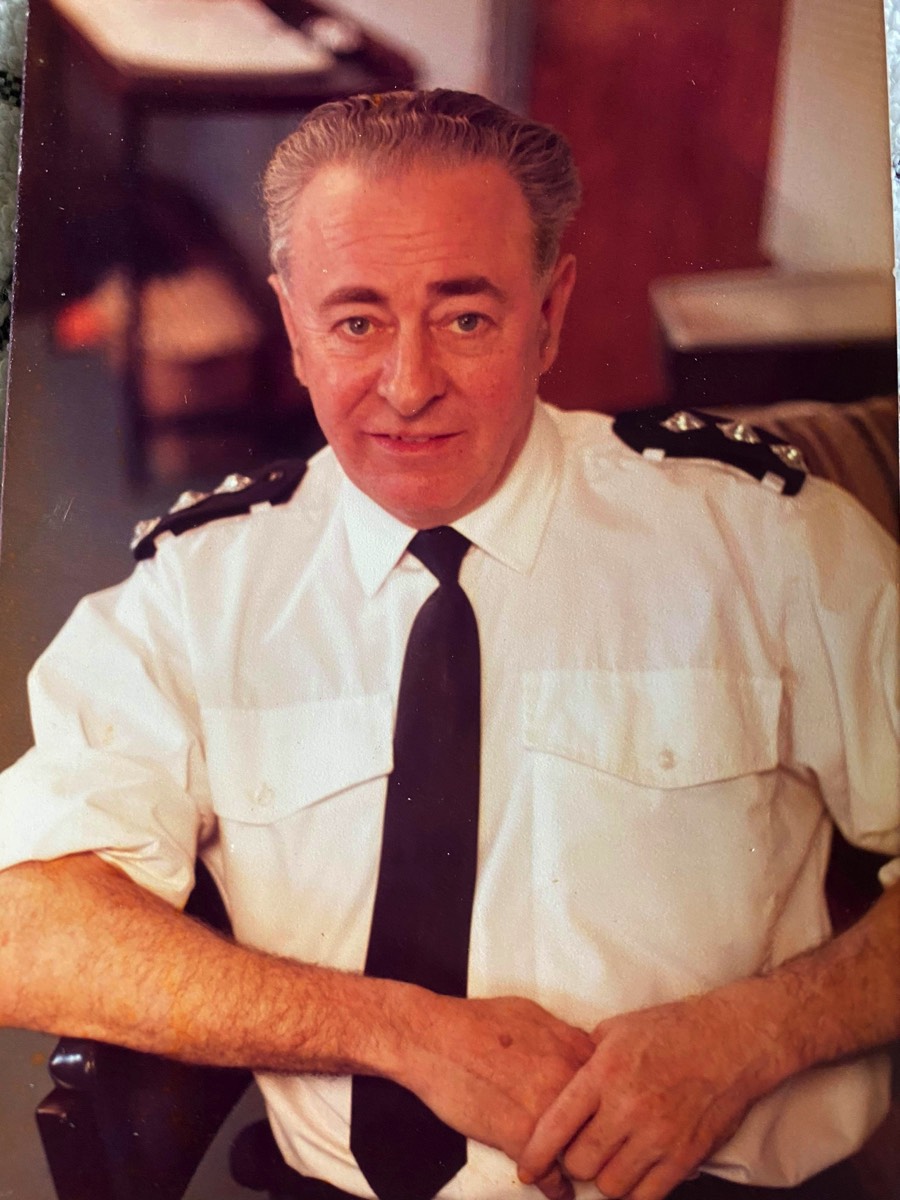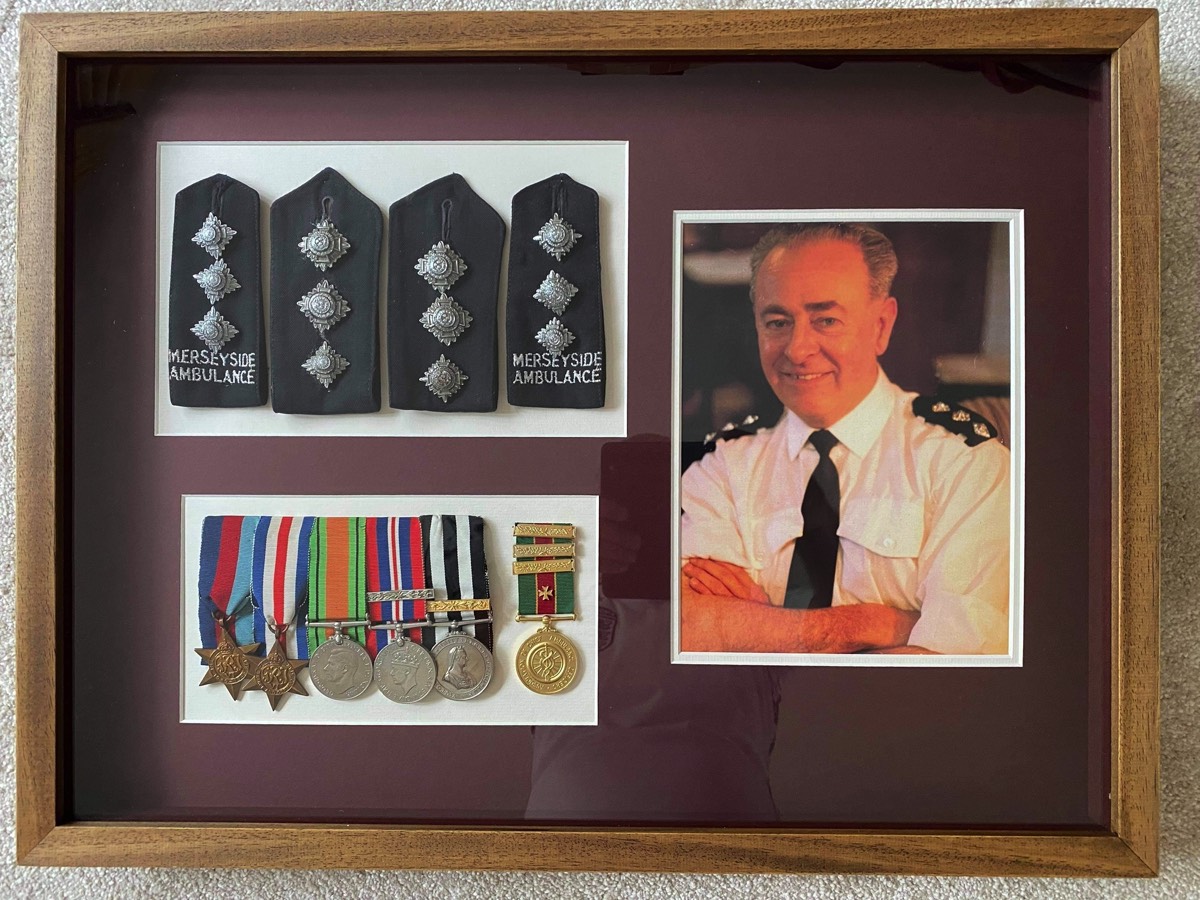The summer Liverpool burned
During July 1981 Liverpool was devastated by large scale civil disturbances. These riots occurred mainly in the Toxteth area with some smaller skirmishes also happening in the Netherley and Cantril Farm areas.
The main disturbance started to build up from the 3rd July and lasted some 9 days with Toxteth erupting into a mass night of violence on the 6th July which resulted in over many hundreds of Police Officers and Civilians being injured, 70 buildings destroyed by Fire and the documented first ever use of CS Gas by police on the UK Mainland. Many patients were seriously injured with one person receiving fatal injuries as the result of a vehicle collision.
It was unique territory for all the Emergency Services and this web page aims to capture how the ambulance service tried its best to treat those who were ill or injured, without prejudice and in a city that became divided between Police and rioter lines.
The main disturbance started to build up from the 3rd July and lasted some 9 days with Toxteth erupting into a mass night of violence on the 6th July which resulted in over many hundreds of Police Officers and Civilians being injured, 70 buildings destroyed by Fire and the documented first ever use of CS Gas by police on the UK Mainland. Many patients were seriously injured with one person receiving fatal injuries as the result of a vehicle collision.
It was unique territory for all the Emergency Services and this web page aims to capture how the ambulance service tried its best to treat those who were ill or injured, without prejudice and in a city that became divided between Police and rioter lines.

Junction of Upper Parliament Street and Catherine Street - Princes Park Hospital is in no mans land just ahead of the ambulance on the right
and then it was Friday and the weekend when it all really started: now that was really scary
Dave Sullivan

Dave Sullivan has been with Liverpool Ambulance Service for over 40 years.
On the July 1981 he was on night shift on Echo 01 at Anfield Station, Liverpool alongside his colleague Brian Peters. It was a night shift that Dave has never forgot.
Dave provided an account of that duty in the Liverpool Echo 5th July 2011 and he has added some more content for us.
For those of us who have worked with Dave; he is a very experienced and capable paramedic who you want alongside you in a crisis. If Dave uses the word scary it truly was.
On the July 1981 he was on night shift on Echo 01 at Anfield Station, Liverpool alongside his colleague Brian Peters. It was a night shift that Dave has never forgot.
Dave provided an account of that duty in the Liverpool Echo 5th July 2011 and he has added some more content for us.
For those of us who have worked with Dave; he is a very experienced and capable paramedic who you want alongside you in a crisis. If Dave uses the word scary it truly was.
“You could feel that something was brewing in Liverpool 8 even before the incident that’s said to have sparked the rioting off.
There wasn’t rioting, just skirmishing, fights etc. We were running people to the new Royal Liverpool Hospital on Prescot Street. Some were police, some were people that had been assaulted with stones.
I’d been to large-scale disturbances before but nothing on the scale compared to that weekend.
One of the worst times was the evacuation of Princes Park Hospital. I think there were 96 elderly patients in there. We went amongst the rioters with no police protection and into the hospital. Outside the police lines had just parted for us and we drove through them, then we drove through the rioters’ lines. In the hospital some of the people helped us – rioters if that’s what you want to call them. There was a lot of smoke in the hospital from the fire at the Liverpool Racquet Club next door, and there were a lot of people in there that didn't belong inside the hospital at the time. We just loaded patients up as fast as we could. We had six very elderly and very frightened patients, our designated receiving Hospital was Newsham General; after delivering them we were sent straight back to Toxteth.
We were only attacked ourselves once. It happened when we were sent to a report of a policeman been stabbed somewhere down off Lodge Lane, and as we drove down Tunnel Road into Lodge Lane they ran at us from all angles and one feller nearly went under the wheels of the ambulance. He had one of the old tea crates and he threw that at the ambulance – how the driver missed him I don't know. There were big crowds running towards us so we had to try and turn around to where there were less of the crowds.
As far as I can remember, only one ambulanceman was injured during the riots, he was hit by a brick causing a laceration to his leg.
Then we were asked for volunteers to cut through the lines as a snatch squad to rescue injured policemen, but the only protection we had was a plastic hat! In the end we must have taken away over 100 police, plus rioters – or bystanders as they were called at the time.
I was also on duty the night when the lad [David Moore] was run over by a police Land Rover, me and my crew mate Brian Peters were sent to the call. As ambulance men we had to treat and get this lad away as fast as we could. Unfortunately he didn’t make it; he died shortly after getting to hospital. It was later reported that David Moore, 23, from Wavertree, was visiting friends in the Liverpool 8 area on the night of July 28 1981. He walked with a heavy limp, the result of an earlier car accident, and was unable to get out of the way of a police van as it charged across some waste land near Upper Parliament Street.
Even after the riots had died down, for ages afterwards the atmosphere was bad. We went to Granby Street and we were stopped by about 15 or 20 people and they wanted to know if we had policemen in the ambulance. We didn’t, and after they checked we were allowed to go ahead unmolested, but every time we went down there the hairs on the back of your neck would stand up.
There wasn’t rioting, just skirmishing, fights etc. We were running people to the new Royal Liverpool Hospital on Prescot Street. Some were police, some were people that had been assaulted with stones.
I’d been to large-scale disturbances before but nothing on the scale compared to that weekend.
One of the worst times was the evacuation of Princes Park Hospital. I think there were 96 elderly patients in there. We went amongst the rioters with no police protection and into the hospital. Outside the police lines had just parted for us and we drove through them, then we drove through the rioters’ lines. In the hospital some of the people helped us – rioters if that’s what you want to call them. There was a lot of smoke in the hospital from the fire at the Liverpool Racquet Club next door, and there were a lot of people in there that didn't belong inside the hospital at the time. We just loaded patients up as fast as we could. We had six very elderly and very frightened patients, our designated receiving Hospital was Newsham General; after delivering them we were sent straight back to Toxteth.
We were only attacked ourselves once. It happened when we were sent to a report of a policeman been stabbed somewhere down off Lodge Lane, and as we drove down Tunnel Road into Lodge Lane they ran at us from all angles and one feller nearly went under the wheels of the ambulance. He had one of the old tea crates and he threw that at the ambulance – how the driver missed him I don't know. There were big crowds running towards us so we had to try and turn around to where there were less of the crowds.
As far as I can remember, only one ambulanceman was injured during the riots, he was hit by a brick causing a laceration to his leg.
Then we were asked for volunteers to cut through the lines as a snatch squad to rescue injured policemen, but the only protection we had was a plastic hat! In the end we must have taken away over 100 police, plus rioters – or bystanders as they were called at the time.
I was also on duty the night when the lad [David Moore] was run over by a police Land Rover, me and my crew mate Brian Peters were sent to the call. As ambulance men we had to treat and get this lad away as fast as we could. Unfortunately he didn’t make it; he died shortly after getting to hospital. It was later reported that David Moore, 23, from Wavertree, was visiting friends in the Liverpool 8 area on the night of July 28 1981. He walked with a heavy limp, the result of an earlier car accident, and was unable to get out of the way of a police van as it charged across some waste land near Upper Parliament Street.
Even after the riots had died down, for ages afterwards the atmosphere was bad. We went to Granby Street and we were stopped by about 15 or 20 people and they wanted to know if we had policemen in the ambulance. We didn’t, and after they checked we were allowed to go ahead unmolested, but every time we went down there the hairs on the back of your neck would stand up.
At 7 o'clock on the Sunday Morning, I had a little bit of luck and I decided to take a gamble and capitilise on this luck. I had found out the Headquarters of the organisers of the riot, and I decided to go and talk them. I explained the problems of the previous nights which were of no benfit to them, to the community or to anyone. I wanted the Ambulance Service to adopt a neutral position. It had to be friends to all sides, it had to go into the area for the people who were still taking ill and having their coronaries, their babies etc; and I persuaded them they had to take us into their confidence and convinced them that I would not break their confidence.
Albert Guinney - Chief Ambulance Officer
The Evacuation of Princes Park Hospital
Princess Park Hospital was located in 96 Upper Parliament Street
It was originally founded in 1869 by Josephine Butler as a ‘House of rest’ for women suffering from incurable chronic diseases and from 1975 began to admit male chronic cases as well.
In 1981 it was a 102 bed Geriatric Hospital and on the 6th July it was touching capacity with 96 poorly ill geriatric patients. It found itself in no man’s land between lines of rioters and Police with its neighbouring building the Racquets Club heavily engulfed in flames. Smoke was entering the hospital and a 999 call was received at Ambulance Control from the hospital staff, screaming for help.
Contact was made with the riot organisers. At this stage they occupied the area where the hospital was situated so the organisers went inside the hospital. Ambulance Control them received a call giving full details of the position and recommending immediate evacuation.
The Ambulance Incident Officer that night was George Martin and he had been bolstered by the Deputy Chief Ambulance Officer Gordon Watton and Staff Officer Peter Hanton. They had to plan the dynamic evacuation of all 96 patients from Princes Park Hospital which was surrounded by hostile rioters and threatened by serious fire. Arrangements were made to transfer all the patients to Newham General Hospital, Anfield some 2.5 miles away.
As part of the ceasefire deal to evacuate the hospital Gordon Watton was held hostage by rioters holding a bayonet to his throat because they feared that Ambulances would be used to transport Police through the line.
You have to contextualise that in 1981 Ambulance Staff wore a uniform that was practical identical to that of a Police Officer with the only personal protective equipment provided being a small yellow fluorescent bib and a construction helmet with the letter A on. Becoming a case of mistaken identity was of real concern to the Ambulance Incident Officers and the Ambulance Crews.
Accounts from the ambulance staff who helped the evacuation all tell a story of genuine fear for their own safety and for that of the 96 Geriatric Patients in an unprecedented and hostile environment. It became an unconventional evacuation in which the gentle care and dignity that is normally awarded to poorly ill geriatric patients was balanced against the logistical rescue requirement to get 96 patients way from ever increasing danger rapidly.
As soon as the last patient was being driven away the rioting immediately started and it was at this point that an ambulance man was injured by a brick that was thrown through the open sliding front door of the ambulance. This door was open because the Ambulance Incident Officer George Martin was standing on the ambulance foot well holding on for dear life as they made their escape.
This ambulance incident team negotiated with the rioters a brief ceasefire around the hospital of 1 hour to move all 96 patients. It was completed in 25 minutes.
It was originally founded in 1869 by Josephine Butler as a ‘House of rest’ for women suffering from incurable chronic diseases and from 1975 began to admit male chronic cases as well.
In 1981 it was a 102 bed Geriatric Hospital and on the 6th July it was touching capacity with 96 poorly ill geriatric patients. It found itself in no man’s land between lines of rioters and Police with its neighbouring building the Racquets Club heavily engulfed in flames. Smoke was entering the hospital and a 999 call was received at Ambulance Control from the hospital staff, screaming for help.
Contact was made with the riot organisers. At this stage they occupied the area where the hospital was situated so the organisers went inside the hospital. Ambulance Control them received a call giving full details of the position and recommending immediate evacuation.
The Ambulance Incident Officer that night was George Martin and he had been bolstered by the Deputy Chief Ambulance Officer Gordon Watton and Staff Officer Peter Hanton. They had to plan the dynamic evacuation of all 96 patients from Princes Park Hospital which was surrounded by hostile rioters and threatened by serious fire. Arrangements were made to transfer all the patients to Newham General Hospital, Anfield some 2.5 miles away.
As part of the ceasefire deal to evacuate the hospital Gordon Watton was held hostage by rioters holding a bayonet to his throat because they feared that Ambulances would be used to transport Police through the line.
You have to contextualise that in 1981 Ambulance Staff wore a uniform that was practical identical to that of a Police Officer with the only personal protective equipment provided being a small yellow fluorescent bib and a construction helmet with the letter A on. Becoming a case of mistaken identity was of real concern to the Ambulance Incident Officers and the Ambulance Crews.
Accounts from the ambulance staff who helped the evacuation all tell a story of genuine fear for their own safety and for that of the 96 Geriatric Patients in an unprecedented and hostile environment. It became an unconventional evacuation in which the gentle care and dignity that is normally awarded to poorly ill geriatric patients was balanced against the logistical rescue requirement to get 96 patients way from ever increasing danger rapidly.
As soon as the last patient was being driven away the rioting immediately started and it was at this point that an ambulance man was injured by a brick that was thrown through the open sliding front door of the ambulance. This door was open because the Ambulance Incident Officer George Martin was standing on the ambulance foot well holding on for dear life as they made their escape.
This ambulance incident team negotiated with the rioters a brief ceasefire around the hospital of 1 hour to move all 96 patients. It was completed in 25 minutes.


Do not return to base hostile Indians surrounding your ranch
LIvamb Base Radio Message
That was a famous radio transmission that was broadcast by Ambulance Control at the height of the riot to ECHO 4 and Echo 5 who were the duty Ambulance Crews at Toxteth Station in Upper Stanhope Street. Toxteth Station was located right in the middle of the riots at the rear of the Rialto Theatre which was destroyed by Fire.
The Ambulance Incident team were acutely aware that Toxteth Station had an abundant supply of petrol that has got the attention of the rioters who were looking for fuel to make petrol bombs. Swift action was taken by George Martin and Peter Hanton who managed to disable the petrol pumps making them inoperable. They then put a plan into place to recover all ambulance vehicles and equipment to a place of safety at Anfield Station, Lower Breck Road.